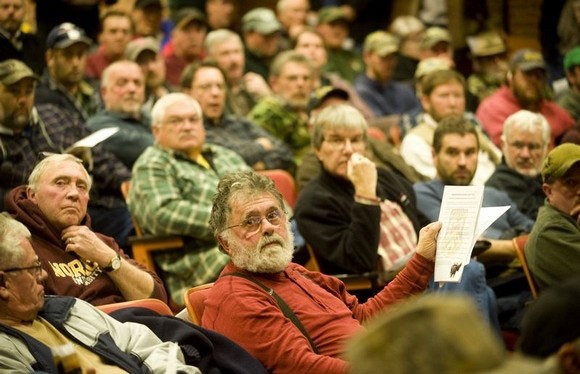
The State of Vermont has been holding public hearings on a proposed expansion of the state’s deer and moose hunting seasons this month, and most hunters who’ve attended these meetings have expressed opposition to the idea. The State will point out that happy/pleased people are less likely to attend public meetings, thus the concerned voices in attendance aren’t an accurate gauge of public sentiment. It’s a fair point that will ring true to anyone familiar with small-town politics or newspaper op/ed pages. But it doesn’t mean the proposed rule change is a smart idea.
What they want to do is hold a 4-day muzzleloader season in early October, during which time hunters can only shoot does. The stated goal is pro-active herd management, a fine concept (see our story Too Many White-tails in the Winter 2010 issue). The problem is the timing.
Any hunter will tell you (as will common sense) that deer aren’t oblivious to human presence in the forest, especially when the presence involves discharging firearms. It’s not a coincidence that the first weekend of the 16-day rifle season is by far the most productive window a hunter has to bag a buck. In areas with heavy hunting pressure, four days of blaze orange and muzzle retorts send the does into packs, turn the non-sex-crazed bucks nocturnal, and generally destroy any semblance of normalcy in the woods.
To think that you can hold a 4-day firearm season and then transition immediately into a bow season – and not have it affect the bow season success rate – is silly. Generally speaking, bow hunters need to get within 20 yards of an animal to take an ethical shot. Robbing them of normal deer patterns ties one hand behind their backs in what is already the most challenging form of deer hunting.
In light of this point, part of the new rule proposal would expand bow season through the month of October; the idea, I suppose, is that things will calm down eventually. While this may or may not be true, it does mean that by the time rifle season rolls around, bow, muzzleloader, and youth hunters will have been traipsing around the forest for 6 straight weekends. Herd health in Vermont may be improving, but the quality of rifle season – the bread and butter of any whitetail management program – is declining. Just look at the numbers. In 1986, 11,935 deer were harvested by rifle hunters, 8 by muzzleloader hunters, and 810 by archers. Rifle hunters accounted for 93 percent of the harvest. In 2008 (most recent data available), the total deer kill was 17, 046 – a dramatic increase – and yet rifle hunters accounted for only 43 percent of that total. A statistician will say what’s the big deal here as long as you’re hitting your number targets, but those familiar with the cultural significance of deer camp and rifle season know that the quality of the hunting for those two weeks in November is of great concern to those who worry about the social legacies associated with hunting.
If the State really needs to kill more does to keep the herd balanced and in check, why not have the last day of rifle season be an either-sex day? Or why not make the December muzzleloader season doe-only? The answers I’ve gotten – that the former would be too dangerous and the later is tough because hunters get too cold – are pretty weak. Let’s hope the department, under new leadership, makes decisions that take into account both population management and the need to keep rifle season a real opportunity to shoot a buck.


Discussion *